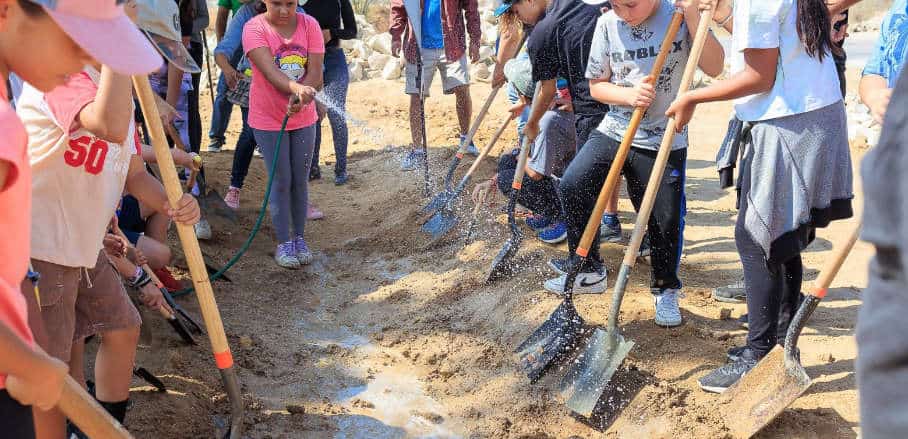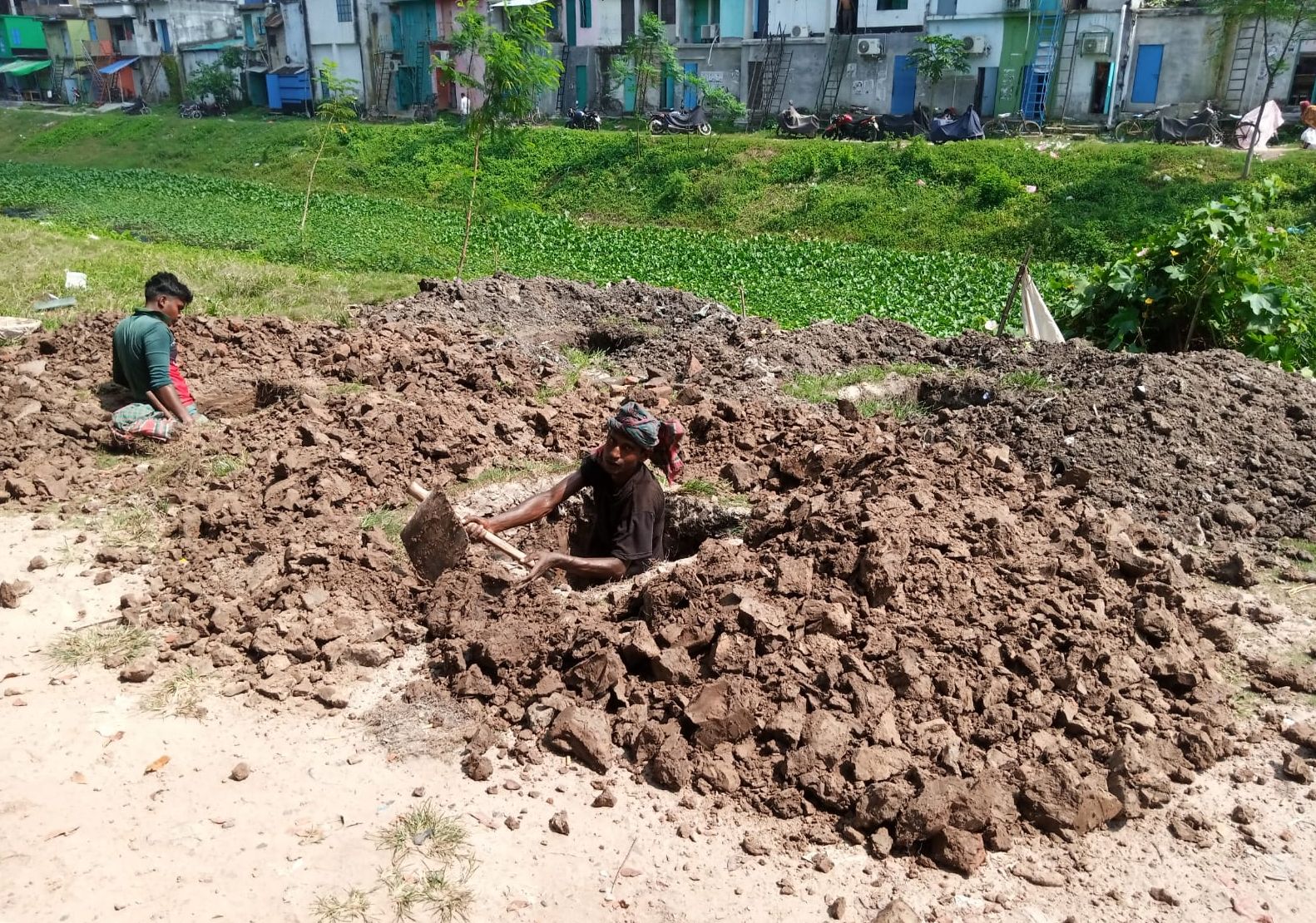This article was first published on URBANET.
Like many coastal cities in Mexico, Los Cabos suffers from a lack of water on the one hand and hurricanes associated with heavy rain on the other. In addition, the scarce existing resources are concentrated on tourist destinations such as hotel complexes. Thus, more and more resources are lost for the informal settlements’ inhabitants and their quality of life decreases. In cooperation with the Los Cabos municipality and Parque Hundido Pedro Sanchez, residents in San Jose del Cabo, organisations of civil society, and GIZ created an Urban Living Lab (ULL). Together they transformed the run-down local park, which was mostly neglected during the pandemic period, into an urban oasis with various elements of green and grey infrastructure. Let’s explore how this was accomplished.
Los Cabos’ Urban Living Lab
As a coastal city, Los Cabos is particularly affected by air pollution, lack of green infrastructure, and water scarcity as a result of climate change. These complex issues could only be addressed through a multi-perspective approach. Hence, the ULL in Hundido Park was built in cooperation with numerous partners such as the Urban Planning Institute of Los Cabos, GIZ, FONNOR, the residents’ initiative “Urbanería”, and EPI Mexico.
The ULL is funded by GIZ within the project Cities Challenge 2.0 and coordinated by the project “Sustainable Development of Urban Coastal Regions through the Integration of Biodiversity and Ecosystem Services (BIOCITIS)” of GIZ Mexico.

Native Plants Providing for Environmental Balance
As part of the renovation process, an area of 1,600 square metres was redesigned together with the residents of the neighbourhood. After the entire park had been cleared of rubbish, they erected several shade pavilions, repainted numerous benches, newly marked two pedestrian crossings to the park, and embellished various walls with paintings. It was important to those responsible for the project to familiarise both residents and foreigners who come to Los Cabos with the diversity of native plants.
To improve environmental balance, almost 200 volunteers from the immediate vicinity of the park planted 228 trees and many climate-resilient native perennials and shrubs.
They also put up signs to inform people who are passing by about individual plants and the benefits of the urban oasis. Additionally, numerous workshops for both schoolchildren and adults took place. Within those workshops, the participants learned a lot about the ecological principles underlying the redesign of the park. Afterwards, they could use this knowledge to actively help with the transformation.
Setting an Example for the Local Community
To combat the problem of soil erosion and to capture rainwater, several gardens with micro basins were created throughout the park, as well as a soakaway to store rainwater. Surrounded by stones and native vegetation, these micro basins work like a sponge that collects the water during the rainy season and keeps it on site for a more extended period of time, eventually allowing it to seep away.
As Ussiel Garcia Moreno, Director of Implan Los Cabos, explained: “Hundido Park was chosen precisely because it already functions as a basin and possesses a significant potential for water collection, inclusion of native flora, and works as a model with a lot of potential to be replicated in other areas.”
Moreover, Hundido Park can serve as an example for people from the neighbourhood who can replicate these simple measures at home or in their school. In this regard, “it is essential to share this information in a way they can touch it”, said Graziela Gonzales Franco, instructor of EPI.

A Meeting Place for the Whole Neighbourhood
In order to involve the local community in the planning and redevelopment of Hundido Park, the so-called “Urbanería” was founded, a neighbourhood committee that participates in all the decision-making. Their central meeting place is a new community pavilion that will also serve as a venue for future educational and recreational activities.
Furthermore, the pavilion helps to strengthen cohesion in the neighbourhood, which will continue to collectively beautify and maintain the park in the future. Activities at the new venue are intended to particularly bring together young people, women, and girls from the community. For example, they can soon enough participate in educational workshops on native flora, fauna, and water care.
Through this collaborative process, Hundido Park has been transformed into a new green urban oasis for the local community in Los Cabos. This Urban Living Lab has also provided GIZ and local partners avenues for constructive dialogue. It can therefore be utilised as a methodological approach for future municipal participatory planning projects. As a result, both the final outcome and the processes used to achieve it can serve as a model for other parks in Los Cabos as well as other coastal regions of Mexico.
The Cities CHALLENGE 2.0 is an initiative led by the Deutsche Gesellschaft für Internationale Zusammenarbeit GmbH (GIZ), in partnership with Cities Alliance and UN-Habitat. It aims at piloting innovative solutions for sustainable planning and building and contributing to the creation of climate-adapted, connected, and liveable neighbourhoods.


